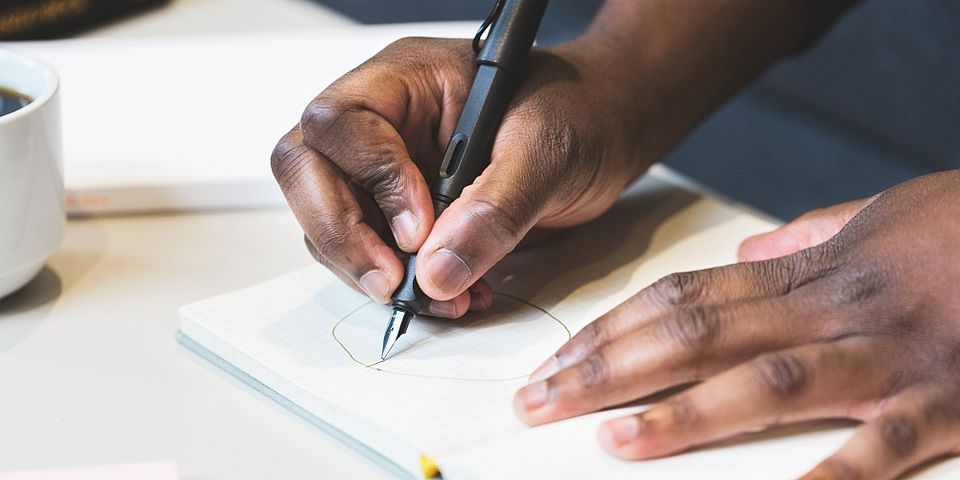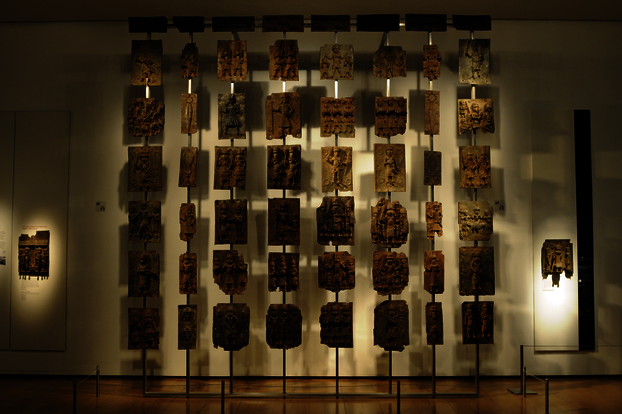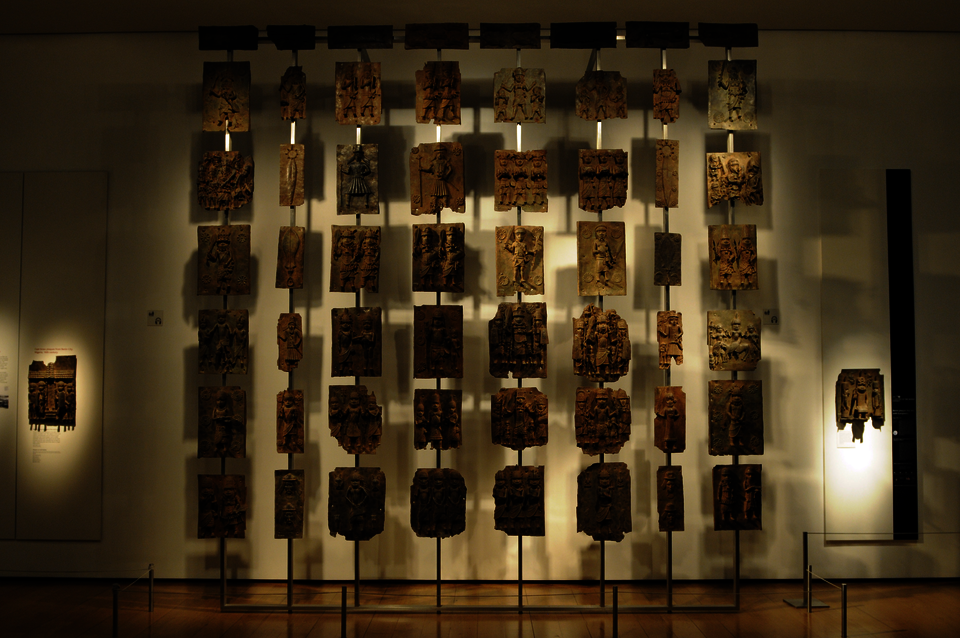/ Julia Singh
Essay | Extracted Material Cultural Heritage: A Matter of the Commons?
Julia Singh | Anthropology / Classical Archaeology | The debate around the provenance and restitution of objects in European museums is not new, however highly topical. With today’s political dynamics and the ‘western’ states’ attempt to escape colonial power asymmetries, re-launching the debate asks for a profound rethinking of object and state identity. Imagining their trajectory within the processes of extractivism and commoning might bring fresh perspectives.
First published in “Aspiring Anthropologists” on November 30, 2022. Personal opinions and views voiced in this publication will evolve as our authors continue their educational process. Contact us if you want to write a critical reply to this article.
In her inaugural lecture at the newly created Chair of Cultural History of Artistic Heritage in Europe at the Collège de France in 2017, art historian and professor Bénédicte Savoy sketches an image of a future where cultural heritage is governed through common engagement of the world’s nations (Savoy 2018). Savoy, a pioneer of the 21st century’s restitution debate, pleads for an ideological and practical rethinking of Europe’s dealing with its past and the material cultural heritage it currently has in its possession. This includes, among other things, a stronger orientation towards an international bundling of efforts in regard to the restitution of said material cultural heritage – namely the vast number of objects with non-European provenance that have filled European cabinets of ‘curiosities’, museums and their depots mainly since the colonial plundering and discovery expeditions of the 18th century. The highly topical discussion around the restitution of non-European material cultural heritage revolves around the question of ownership and possession1 and is to be located in the postcolonial discourse and the frequently discussed attempt at ‘decolonization’. It is thus worth taking a closer look at the idea of a joint governing of cultural heritage, that Bénédicte Savoy and others touch upon, and to raise the question: is material cultural heritage a matter of the commons? In other words: can, or should it be governed commonly? And if so, who are the parties involved, and how would their commoning practice look like? In the following essay, an approximation to answering these questions will be attempted.
One particular theoretical premise might help us with approaching the questions above: material cultural heritage can be understood as an extractable resource2: It can be collected, displaced and stolen, transferred and shifted across different spaces, disintegrated and decontextualized. In this sense, the extracted material leaves behind empty spaces that are re-filled with the feelings of loss, grief, or despair.
Moreover, material cultural heritage is a non-renewable resource. For the present example, this would mean that former colonial powers have extracted and expropriated unique objects from the ones who originally created and/or owned them. By being extracted, these objects change their possessor, but not the content they were given by their owners. An extracted object remains to be a bearer of its owner’s knowledge, (collective) memory or meaning, sometimes even an ancestor’s spirit. Its multi-layered biography is intrinsic.
This highlights the importance of distinguishing between ‘owner’ and ‘possessor’ before going any further. Dealing with extracted and displaced objects can therefore only happen multilaterally by bringing together owners (those who have been expropriated) and possessors (those who have appropriated). Thus, these two parties are the actual ‘commoners’ in the context of this essay.
What arises next, however, might not only be an ideological but also a logistical challenge: Who exactly are the original owners of material cultural heritage and what if they no longer exist? Who are the commoners then? For example, British colonialists invaded the Kingdom of Benin in 1897. They plundered, destroyed, and later traded off a myriad of artworks from Benin's Royal Palace (the so called ‘Benin Bronzes’, MKB 2022). The Kingdom of Benin ceased to exist – today, its former regions lie on the territory of the Federal Republic of Nigeria. Although the original creators and owners of those bronze works are not alive any more, their descendants are. It is all the more important that the present-day state of Nigeria is recognized as a sovereign state and, thus, as a commoner, when discussing restitution of those objects. The same applies to other once colonized states: acknowledging their independence and sovereignty is a must, not only in terms of processing history, but also in order to actually make a fair commoning practice happen.
If objects that were extracted under asymmetrical power relations in the course of colonialism are treated as a commons, and the present day states as commoners, it becomes clear that they are embedded in an intertwinement of transnational relations that cannot be ignored. Put into rather euphemistic terms; these objects will always tell of a shared history. Treating material cultural heritage as a commons is thus inevitable.
However, this should not imply that they simply “belong to everyone” but rather that the commoners have a shared responsibility towards dealing with the objects in discussion. This includes proactively restituting stolen material cultural heritage, or at least enabling and increasing access to knowledge about their existence. And even more so, it means finding ways to fill the voids left behind as well as to organize the new spaces created once the artefacts are transferred. This can be accomplished by establishing places and institutions of memory, and constructing spaces where knowledge is maintained and transmitted broadly.
As mentioned above, treating material cultural heritage as a commons should by no means lead to the utopia of a “world museum”. This would only be the extended version of an old idea: a museum that grants access to those who can afford to pay the visit. And after all, why should an Amazonian Machigengua member have to travel to Europe and buy an entry ticket to a museum to see the flute that once belonged to their grandfather3?
Looking at the accessibility and excludability of material cultural heritage as a commons, it can be concluded that the idea of a ‘transnational commons’ can only come into fruition under the following condition: if the locations of knowledge storage and transmission (either through the presence of the object in a museum or the creation of knowledge vessels as placeholder for the missing object) are not limited to the so called ‘western’ countries, but spread out more widely and flexibly. Object and knowledge transfer must be negotiated through joint action in order to turn the material as well as their intellectual dimension into a truly accessible commons.
Thus, if cultural heritage is treated as a commons, its extractive dimension, as well as the multilateral responsibility around it becomes clear. With this in mind, questions of restitution and rethinking of museum practice can be tackled decisively and without recreating or reinforcing power dynamics of past times.
Footnotes
1 Here, I use ‘ownership’ and ‘possession’ as two different modes of holding an object, as also used in legal understanding. For example, Greece is the rightful owner of the metopes of the Athenian Parthenon, whereas the British Museum possesses them.
2 The main idea of ‘cultural extractivism’ originates from an exhibition in 2021 called “Extractive Zones” at the Museum der Kulturen in Basel, in whose course Bénédicte Savoy held a presentation about the extractive character of European museums’ collecting practice.
3 After the idea of Arno Bertina’s Mona Lisa in Bangoulap (Bertina 2016).
Bibliography
Bertina, Arno (2016): Mona Lisa in Bangoulap: die Fabel vom Weltmuseum, Berlin: Matthes & Seitz.
MKB, Museum der Kulturen Basel (2022): Benin Initiative Schweiz: Forschung und Dialog mit Nigeria, [online] https://www.mkb.ch/de/museum/forschung/benin-initiative-schweiz.html [29.05.2022].
Savoy, Bénédicte (2018): Die Provenienz der Kultur: von der Trauer des Verlusts zum universalen Menschheitserbe, Berlin: Matthes & Seitz (Fröhliche Wissenschaft 135).
Swiss Commission for UNESCO (2022): Welterbe, [online] https://www.unesco.ch/culture/patrimoine-mondial/ [26.05.2022].
Cover image: “Benin Bronzes 1” by Son of Groucho, used under CC BY 2.0 (in some places cropped from the original)
How to cite this article
Singh, Julia (2022): Extracted Material Cultural Heritage: A Matter of the Commons?, in: Aspiring Anthropologists Basel, Jg. 2022.
Aspiring Anthropologists
Mit diesem Blog-Projekt ermöglicht die Fachgruppe den Studierenden der Ethnologie und Anthropology in Basel, schon während des Studiums wertvolle Erfahrungen im Publizieren zu sammeln und die Zusammenarbeit im Peer-Review-Prozess zu üben.
Die Inhalte dieses Blogs werden von Studierenden verfasst und spiegeln Schritte im Ausbildungsprozess wider. Unsere Autor·innen vertreten ihre persönlichen Meinungen, die nicht unbedingt von der Fachgruppe Ethnologie geteilt werden, sich im Laufe des Lernprozesses verändern können und sich auch weiterentwickeln werden.
Hat dieser Beitrag Ihr Interesse geweckt? Haben Sie konstruktive Kritik oder möchten weiterführende Gedanken hinzufügen? Wir würden uns freuen, Ihre Replik zu veröffentlichen!

Redaktion
Fachgruppe Ethnologie
Wir laden alle Studierenden herzlich dazu ein, sich an diesem Projekt zu beteiligen:
- Peer Review und Lektorat
- kreatives und wissenschaftliches Schreiben
- Redaktion und Verwaltung




